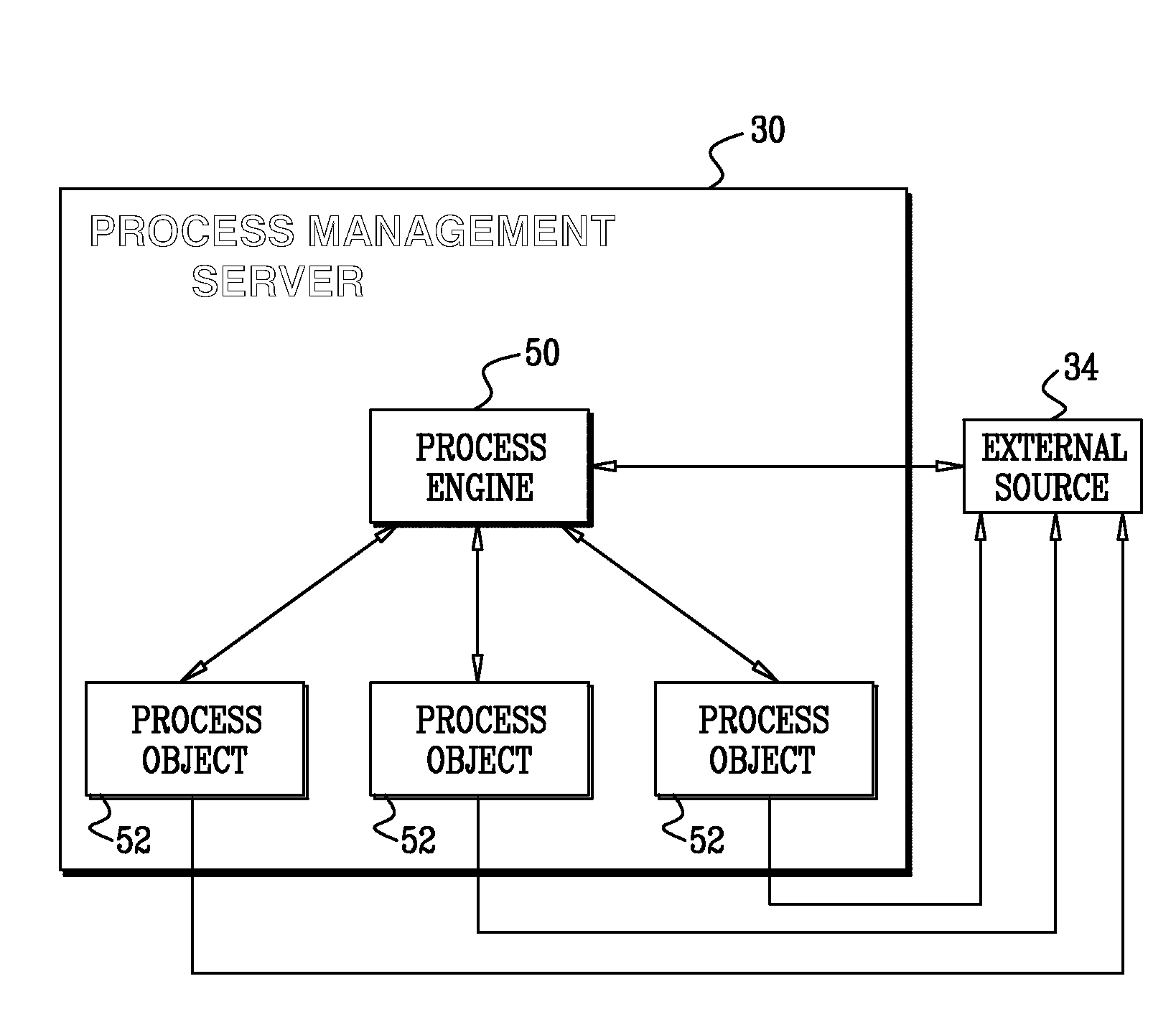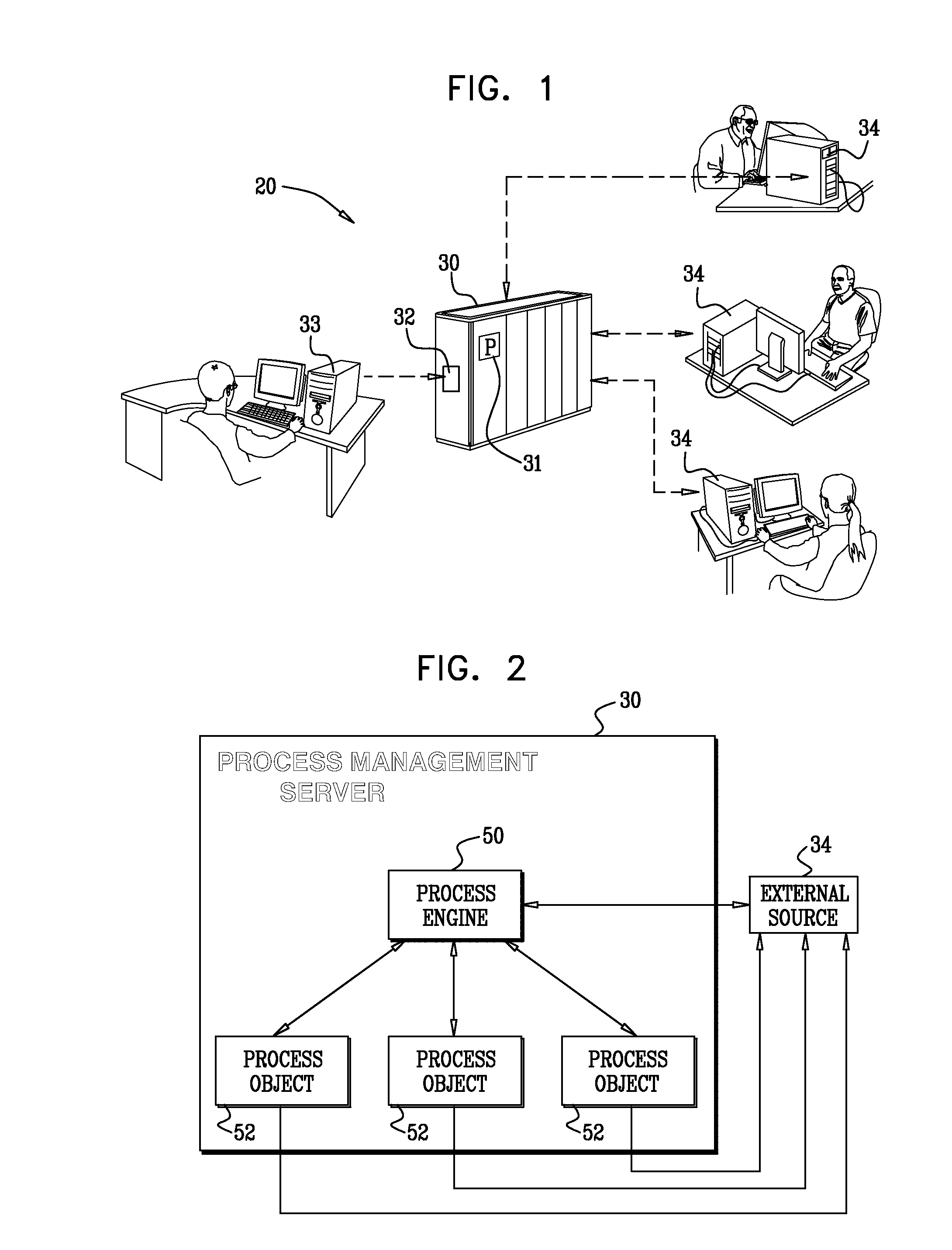Defining and executing processes using declarative programming language constructs
a programming language and construct technology, applied in the field of process definition and execution, can solve problems such as complex processes
- Summary
- Abstract
- Description
- Claims
- Application Information
AI Technical Summary
Benefits of technology
Problems solved by technology
Method used
Image
Examples
Embodiment Construction
Overview
[0014]Although the development of business process languages has been motivated in part to simplify the task of business process definition, this goal has not been consistently achieved. The use of a dedicated language to define business processes often creates overhead in business process development organizations, because developers must learn a new language having a new set of abstractions, syntax, and definitions. For many simple business processes used today, the use of BPEL increases rather than reduces complexity. Moreover, organizations must develop an advanced infrastructure to support the many constructs provided by BPEL, further increasing complexity.
[0015]Current process definition languages generally include the following capabilities:[0016]the definition of activities / states that construct the business process;[0017]the definition of transitions between the activities / states. Such definition typically includes conditional execution, the usage of branching and l...
PUM
 Login to View More
Login to View More Abstract
Description
Claims
Application Information
 Login to View More
Login to View More - R&D
- Intellectual Property
- Life Sciences
- Materials
- Tech Scout
- Unparalleled Data Quality
- Higher Quality Content
- 60% Fewer Hallucinations
Browse by: Latest US Patents, China's latest patents, Technical Efficacy Thesaurus, Application Domain, Technology Topic, Popular Technical Reports.
© 2025 PatSnap. All rights reserved.Legal|Privacy policy|Modern Slavery Act Transparency Statement|Sitemap|About US| Contact US: help@patsnap.com



